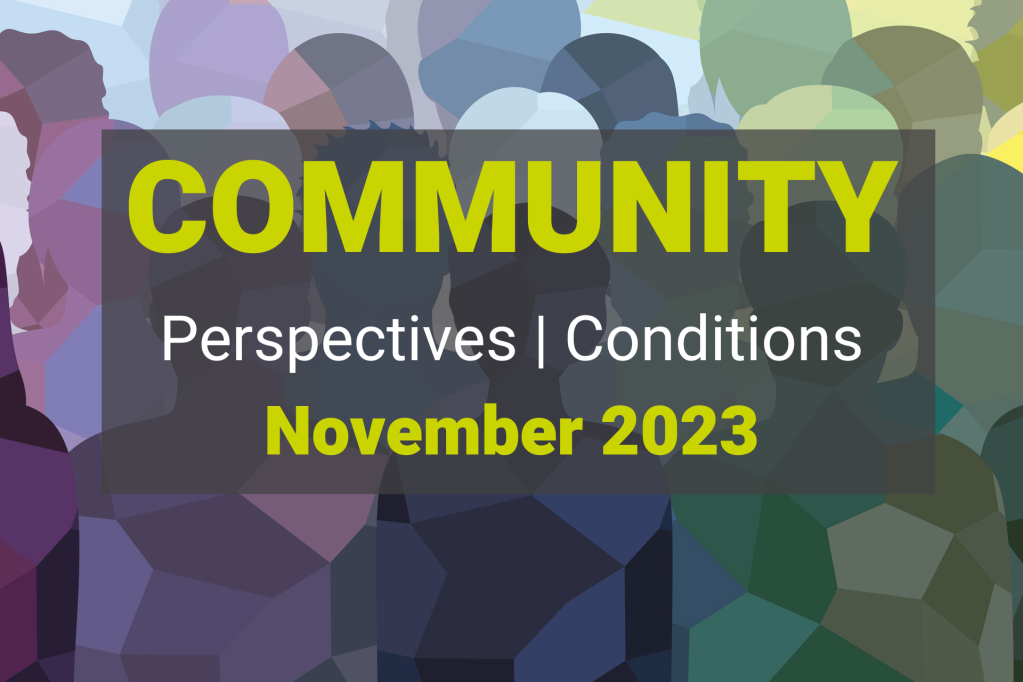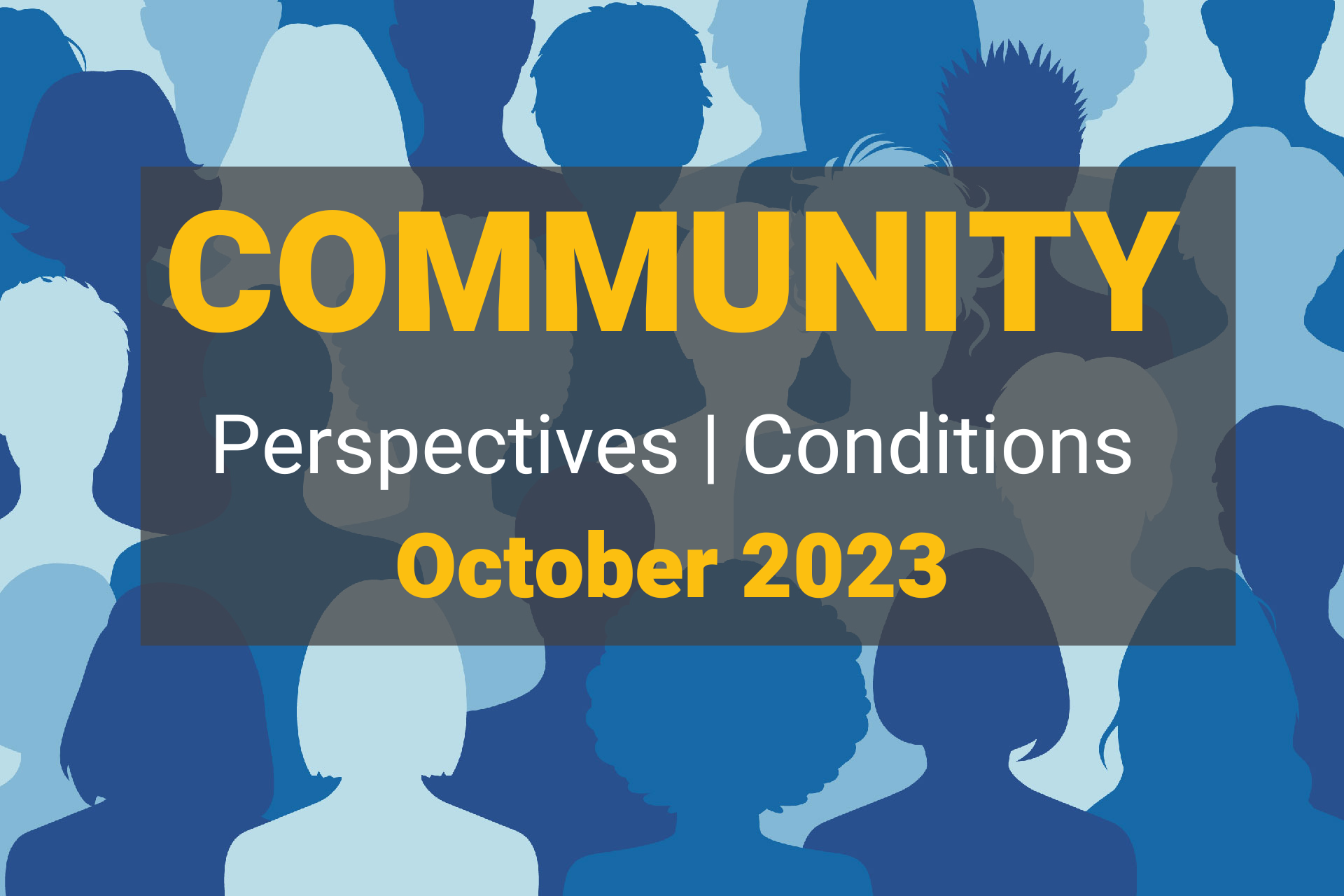Federal Reserve Banks across the country collect anecdotes from contacts and hone in on concerns for Federal Reserve Beige Book summaries, published eight times each year. Historically, insights about conditions affecting low- and moderate-income communities have come from the perspective of businesses. Several Reserve Banks began including “Community Conditions” and “Community Perspectives” sections last fall. These sections provide insight into local changes through direct accounts of nonprofit and community leaders and workforce professionals serving lower-income people. Here are some takeaways from the November 2023 Beige Book, which was prepared at the Federal Reserve Bank of Atlanta and based on information collected on or before November 17, 2023.
Please note that the Beige Book summarizes comments received from contacts outside the Federal Reserve and is not a commentary on the views of Federal Reserve officials.
“Homelessness has reached unprecedented levels in many parts of the District, driven by a shortage of affordable housing and the arrival of asylum seekers. Local governments are not able to meet the growing need for shelter, and the locations of new temporary shelters have been the subject of intense debate. Community planners, non-profit organizations, and government entities managing the homelessness crisis are considering new strategies to increase the supply of affordable housing units. While success has been limited, strategies have included repurposing government structures, incentivizing accessory dwelling units, and increasing tax incentives and private sector collaborations.”
– New York Fed, Federal Reserve 2nd District, Community Perspectives
“Nonprofit contacts noted that while demand for skilled tradespersons remained elevated, barriers to entry persisted for many lower-wage jobseekers. To meet the need for skilled labor and mitigate some of these barriers, one workforce-development contact described a construction apprenticeship program that recently opened an onsite childcare center and provided transportation to the job site. Demand for affordable housing remained high, and availability of affordable units was tight. Several contacts said homelessness had spiked recently and cited multiple reasons, including elevated rents, fewer landlords accepting housing choice vouchers, and more competition for affordable-housing units. One nonprofit indicated that construction costs were too high to build affordable housing because of current tight credit conditions and higher interest rates.”
– Cleveland Fed, Federal Reserve 4th District, Community Conditions
“Jobseekers and workers in lower-wage positions expressed ongoing confidence in the labor market, both in available opportunities and in the potential to secure better pay. Still, many reported ongoing difficulties to cover basic household expenses. Business contacts affirmed that high prices continued to squeeze consumer finances, with rental delinquencies rising slightly and financially constrained households relying to a greater extent on credit card debt to get by. Some civic leaders shared concerns that worker shortages in construction could delay anticipated infrastructure investments. Workforce development contacts indicated that employers are finding labor more readily available when offering on-the-job training.”
– Atlanta Fed, Federal Reserve 6th District, Community Perspectives
“Community, nonprofit, and small business contacts reported little change in economic activity from a robust level. State government officials saw some decline in tax revenues but continued low demand for unemployment insurance. Small business owners reported that high labor and capital costs were eroding profit margins. Nonprofit contacts were experiencing ongoing high demand for services, especially at food pantries, and expressed concern about lower levels of private funding, delayed receipt of public funding, and the end of COVID-era government support. Heading into the winter months, low- and moderate-income consumers were “piecing it together” to meet their needs for winter clothing in anticipation of higher housing, food, and heating costs.”
– Chicago Fed, Federal Reserve 7th District, Community Conditions
“Organizations serving low- and moderate-income (LMI) populations reported LMI households have largely spent down any savings and are increasingly turning toward credit cards to make ends meet. More households were skipping car payments, rationing medication, and moving in with other families to cut back on expenses. Organizations noted that while most industries have increased wages recently, the growth in earnings at LMI households was insufficient to offset recent and ongoing inflation. As a result, non-profits were experiencing substantially higher demand for assistance. They reported struggling to meet that demand due to decreasing donations.”
– Kansas City Fed, Federal Reserve 10th District, Community Conditions
“Demand for nonprofit services rose broadly, and contacts expected further increases in requests for assistance with the holiday season approaching. Affordable housing continued to be a pressing concern not just for low-income households but for some seniors too, and one nonprofit said that even with housing vouchers they were facing difficulty finding units for their clients. Moreover, finding developers to build subsidized housing was difficult. Sunsetting of various COVID relief funds has posed several challenges, particularly for childcare centers. Contacts noted that multiple daycare centers had closed. Demand for food assistance has accelerated since spring 2023. Nonprofits noted challenges in meeting their fundraising goals, which some attributed to donor fatigue.”
– Dallas Fed, Federal Reserve 11th District, Community Perspectives
“Community and support organizations continued to report strained resources and elevated demand for services. Higher numbers of individuals across the District sought support for housing, health, and mental health services. Demand at food banks also increased. Charitable donations by corporations and households declined further, though assistance from government funding aided some nonprofit organizations. At the same time, support organizations reported higher expenses, including for insurance and business software. Small businesses in urban areas were challenged by high borrowing costs along with weaker consumer demand while widespread remote or hybrid work arrangements continued.”
– San Francisco Fed, Federal Reserve 12th District, Community Conditions
Visit the November 2023 Beige Book report for a full national summary and more information about economic conditions from each Reserve Bank, including labor markets, financial services, real estate, and more.




